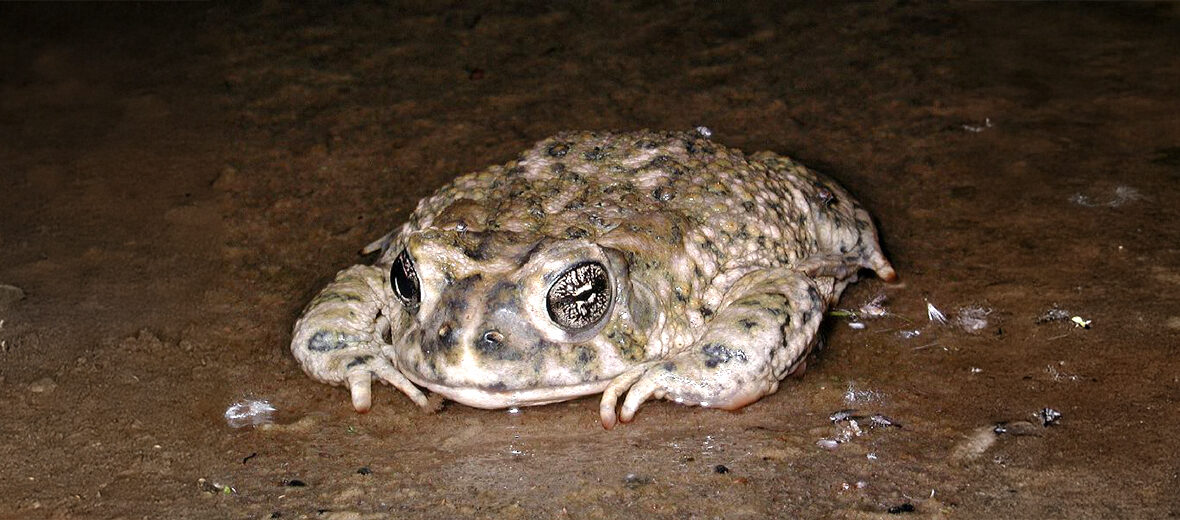
The arroyo toad is a species of true toad in the family Bufonidae. They are endemic to California, and Baja California state, as well as Mexico. Sadly, these amphibians face many threats such as habitat loss and destruction at the hands of residential and commercial developments, farming, ranching, dams, fires, and mismanaged fire suppression efforts; habitat division at the hands of roads and railroads, which divide their territories and result in vehicle strike (being hit by vehicles); recreational activities, that interrupt their breeding efforts; invasive species, that can bring about predation and disease; and climate change, that can result in severe droughts. The IUCN lists these toads as Endangered. Their population trend is listed as decreasing.
First the Stats…
Scientific name: Anaxyrus californicus
Weight: Up to 1+ ounce
Length: Up to 3 inches
Lifespan: Up to 5 years
Now on to the Facts!
1.) Their preferred habitats are sandy or cobbly washes with fast currents and upland as well as riparian habitats.
2.) An arroyo, typically found in the desert, is a wash that is a mostly a dry creek or river bed that fills and flows after there is enough rainfall, but only temporarily during specific seasons.
3.) Arroyo toads inhabit these locales along creeks and rivers with shallow pebble-like rocks near sandy terrains.
4.) Like the majority of toads, they are nocturnal (active at night).
5.) These toads have a unique mating call that distinguishes them from other toads in their range. This aids in their identification and study.
But wait, there’s more on the arroyo toad!
6.) While hunting, they lunge at their prey and utilize their large and sticky tongue to capture their food.
7.) During the dry season, these toads aestivate (hibernation for amphibians and reptiles) to avoid desiccation (drying out).
Did you know…?
Like other toads, these critters can release poison from their parotid glands. This toxin can cause serious irritation and pain to the throat, eyes, nose, mouth, cardiovascular, and respiratory systems. Seizures, paralysis, vomiting, hallucinations, or even death can occur with enough ingestion of the poison.
8.) Breeding season takes place at the end of winter and early spring.
9.) After amplexus (when the male grips onto the female) and fertilization, up to 4,700 eggs are laid in the water.
10.) Eggs hatch in up to 6 days. They metamorphose into toadlets in up to 85 days.
But wait, there’s still more on the arroyo toad!
11.) As soon as the eggs hatch, the larvae feed on microbes located in the sand by the water where they hatch. These toads also play an important role in nutrient cycling within their habitat. Their activities help enrich the soil, which in turn supports plant growth.
12.) Juvenile toads feed on ants and other small insects.
Did you know…?
Their total estimated breeding population is less than 3,000 individuals. They have been extirpated from an estimated 75% of their former range in the U.S.
13.) Adults prey on caterpillars, moths, crickets, snails, and sometimes the eggs and larvae of other arroyo toads.
14.) Fish, frogs, toads, birds, lizards, garter snakes, dragonfly larvae, and water bugs all prey on the larvae, juveniles, and/or adults.
15.) These toads have been the subject of litigation related to their conservation status. Conservation initiatives are in place to mitigate the decline of these toads. These include habitat restoration projects and community education programs.
Now a Short Arroyo Toad Video!
This video talks about toads in general.
Be sure to share & comment below! Also, check out the Critter Science YouTube channel. Videos added regularly!

Want to suggest a critter for me to write about? Let me know here.
Some source material acquired from: Wikipedia & IUCN
Photo credit: Creed Clayton – USFWS Pacific Southwest Region



